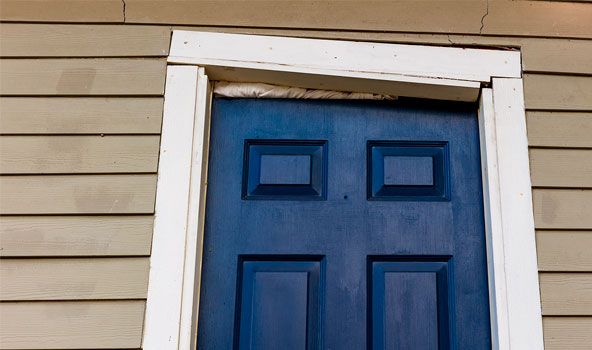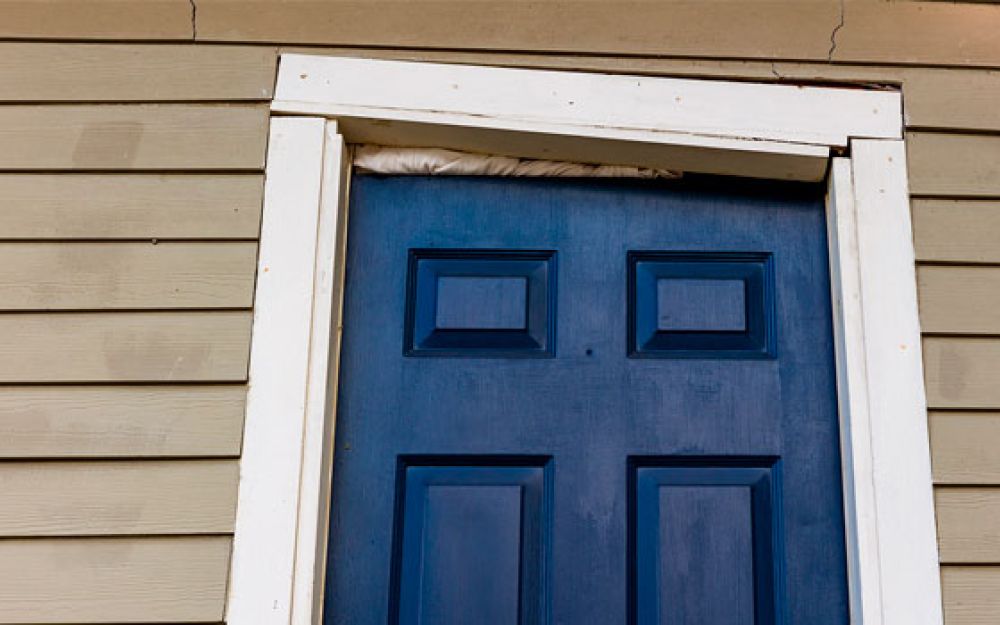Sticking Doors and Other Signs That Mean You Need a Foundation Repair



Odd events happen to your home when the seasons change. Floors may start to creak. Windows becomes harder to open. Sticking doors makes you work to open and close.
The good news is your house isn’t haunted. A sticking door can be normal and can pass once the seasons settle down. The bad news is there may be a bigger problem. Your doors may continue to stick after the seasons change.
Chronically sticking doors are a sign that your foundation may need repair. Do you think your foundation may be the culprit? Here is what to look for and a few tips on how to fix those sticky doors.
For help with sticking doors in the greater Hampton Roads, VA / NC region, learn more about BAY Crawl Space & Foundation Repair at our Home Page, About Us Page, or Request A Quote Page.
Causes of Sticking Doors
Sticking doors aren’t only annoying; they’re a sign that something is wrong.
Fortunately, many of these causes aren’t anything serious. There’s an endless list of reasons as to why your doors may be sticking.
Here are few common reasons why your doors and windows are sticking.
Humidity and Weather
Your doors may start sticking after heavy rain. The humidity and moisture in the air rise after a rainstorm, causing the wood in your home to swell. As the wood swells, your doors and windows will become harder to open and close.
Once the humidity falls, the wood will dry out and shrink back to its usual size.
Climate and Seasons
Do you live in a climate that experiences different seasons? If so, you may notice some seasons will cause your doors and windows to stick.
The warmer seasons tend to have more humidity in the air, which, as mentioned, will cause the wood to swell. You may notice sticking doors and windows during the warmer months.
The winter months are cooler and drier, which causes the wood to shrink. If your doors and windows go back to normal, the climate and humidity are affecting your home.
Hinge Alignment
Constant use of your doors can cause your hinges to fall out of alignment. When this happens, you’ll experience sticking doors, squeaks, or latching issues.
Screws will start to come loose from constant use. Young children may swing on the doors, causing the hardware to twist and bend.
You can repair sticking doors caused by an alignment issue by replacing screws or hinges. You can also shave the top and bottom of the door to prevent it from sticking.
What If the Problem Continues?
Have you tried fixing your sticking doors but found they continue to stick? If your answer is yes, then there’s a bigger problem.
Your foundation needs repair.
Before you jump to conclusions, you need to make sure the problem is your foundation. In addition to your sticking doors, you’ll experience several other signs that your foundation needs help.
Don’t Ignore These Foundation Signs
Your foundation is the bottom load-bearing structure of your home. It consists of thick walls of concrete buried in the dirt for added stability. Your foundation literally holds your home together.
Like most aspects of your home, the foundation is susceptible to damage. Various reasons cause your foundation to deteriorate, including the soil, climate, plumbing problems, and poor foundation drainage.
If your foundation starts to wear, crack, and deteriorate, it will affect the rest of your home. Besides your sticking doors, other signs of a damaged foundation will start to show. Some of which are more dangerous and detrimental to the integrity of your home!
Here are several important signs of a deteriorating foundation you should never ignore.
Cracks and Fractures In Your Home
Cracks and fractures in your home most obvious sign there’s a problem with your home’s foundation. These cracks can appear indoors along the walls and ceilings. Others may form on the building’s exterior along the walls and cracks on the chimney.
It’s normal for a new foundation to develop small fissures in the first few years after construction.
Large horizontal cracks and gaps running along the sides of your crawl space are a major cause for concern. Horizontal and diagonal cracks are a sign your foundation is experiencing a great deal of pressure. If this pressure continues, it can cause a part of the foundation to fail.
Small cracks and those running vertically tend to be less concerning. Most tiny fissures, particularly vertical ones, are cosmetic and won’t cause any damage.
If you’ve noticed cracks and are unsure about their severity, contact a foundation repair professional to inspect your foundation. They’ll be able to tell you the severity of the damage and whether your foundation will need repairs.
An Upheaving Foundation
Most foundations settle downwards, but there are instances where your foundation heaves upwards. This process is foundation upheaval and most commonly caused by moisture.
Extra moisture can occur from excess rain or a sub-foundation plumbing leak. The moisture will cause the soil to expand and become heavy. The heavy soil will push your foundation upwards.
Frost and freezing temperatures will cause the moisture in the soil beneath your foundation to freeze. When it freezes, its volume can increase up to 9%, further pushing your foundation upwards.
Soils containing clay are the most affected by this as they’ll gain and lose more volume than other types of soils. Some upheaval can move as much as two to three inches!
You may notice your garage walls shifting upwards, crooked floors, and cracks along the walls of your home. Sticking doors, windows, and warped hallways are all telltale signs of an upheaving foundation.
If you check your crawl space, you may notice large cracks along the walls and floor of the foundation. Talk with a foundation specialist to learn more.
Gaps Around Doors and Windows
Have you noticed gaps forming around your windows and exterior doors?
These gaps can cause doors to stick and prevent them from latching correctly. Double doors won’t align and may stop latching altogether. In serious cases, the door frames may warp and twist, rendering your doors useless.
Gaps and alignment issues with your doors and windows are signs of a shifting foundation. If you notice significant interior signs such as these, don’t wait to see if they’ll get better. Have a professional check your foundation for you.
Uneven and Sagging Floors
Sagging warping floors are an eyesore and potentially dangerous. Larger items may slide or roll, damaging other areas of your home or injuring you or your family. Uneven floors can be dangerous for young children, elderly individuals, and those who have a physical impairment.
When your floors and ceilings start to warp, the foundation issue impacts your home’s pier and beam structure. Over time, your floors will no longer be level. If you notice your floors are becoming more out-of-level, you’ll need to check your foundation.
A Settling and Sinking Foundation
The most common foundation issue is a settling and sinking foundation. If you start to notice that one side of your home is lower than the other, your foundation is sinking.
As your home settles, your doors and windows may stick, and your floors will warp. Cracks will form both inside and outside of your house along the walls and floors. Vertical cracks in your crawl space walls are a sure sign your foundation is shifting downwards.
A professional will need to inspect the damage to determine the problem. They’ll be able to make the necessary fixes to prevent the damage from spreading or causing your foundation to fail.
A Wet Crawl Space
As mentioned, humidity and moisture can wreak havoc on your home’s foundation. If your crawl space is wet and damp, there’s something wrong with your foundation.
Signs of a wet or damp crawl space can affect other areas of your home. The humidity will escape into the rest of your home and cause the wood features in your home to expand. The expansion will cause doors and windows to stick and floors to warp.
Severe cases can lead to the growth of mold and mildew on your walls, floors, and ceilings. Rain and improper drainage can cause your crawl space to flood.
A professional will need to identify and fix the foundation issue. They may recommend a crawl space encapsulation and adding a dehumidifier to prevent future issues.
Gaps Between Cabinets, Counters, and Walls
Anytime your cabinetry and trim pull away from the walls, there’s a major problem happening. At first, the shifts might start small but will eventually grow worse the longer you ignore the problem. Severe cases can cause counters and cabinets to pull completely away from the walls!
Warping floors and walls shifting out-of-level are the main causes of the gaps forming between your cabinets and walls. A shifting foundation will cause your floors and walls to twist and warp.
If you notice your walls are no longer straight and level, there’s something wrong with your foundation.
What Should You Do?
You need to investigate the problem right away any time you notice sticking doors, windows, or warping floors. Whatever you do, don’t wait!
A professional will be able to examine the damage and identify the main cause. Should you need repairs, they’ll offer the best solution and a quote.
Do you think your home is having potential foundation issues? Let’s get in touch. The sooner you contact us, the sooner we can fix your foundation and prevent any future issues.

